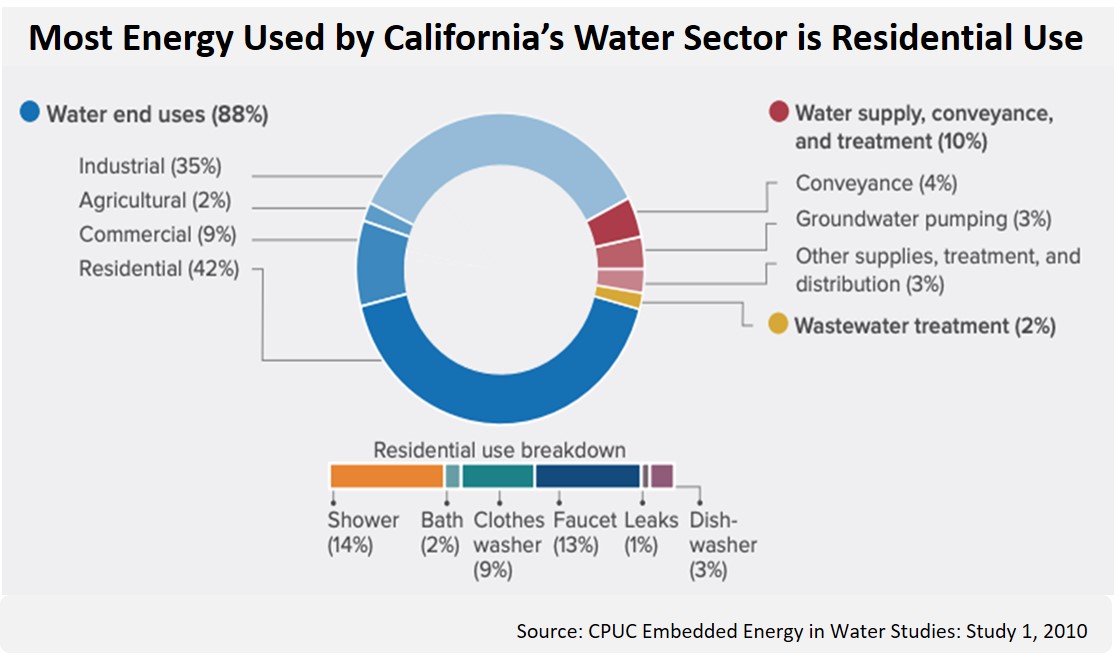Water is heavy; it takes large amounts of energy to haul water uphill. Conversely, the prodigious power of water rolling downhill can scour stone into canyons, and can also be harnessed for energy, whether it is used for grinding grain or generating electricity.
Water has embedded energy; the awesome power of the sun evaporates water from the oceans-leaving salt and other impurities behind-and then lifts it high up in the atmosphere where it coalesces into precipitation. The higher up that precipitation falls, the more places it can potentially roll downhill (its natural watershed).
Add energy, and we expand the natural watershed by pumping water uphill. Moving water around consumes more electricity in California than any other use. The Edmonston Pumping Plant , which lifts water 2000 feet from the Central Valley to southern California, is the single largest user of electricity in California and accounts for 40% of the electricity used by the State Water Project (SWP).
In the heat wave-caused electricity shortage of August 2020, the SWP worked with California Independent System Operator (CAISO), the electricity load-balancing authority for the California grid, to provide dispatchable power, shutting off pumps to reduce electricity demand while releasing water to flow downhill to generate electricity when electricity demand was highest. This reduced the spatial extent and duration of (or even prevented some) rolling blackouts. We can do more of this, but that requires building water storage throughout the state so that sections of the long aqueducts can convey water independently, as electricity is needed in their region.
Water conveyance, treatment, delivery, heating and sewage treatment account for about 20% of California electricity and 30% of natural gas use. Most of the energy consumed by the water sector is for residential use.
Pure water is also energy in the sense that, if we use enough energy and expensive technology, we can clean dirty water for reuse. Advances in technology have made desalination and potable reuse/recycling, (which requires similar equipment), energetically competitive with imported river water for coastal southern California cities.
Ironically, using more energy at the right times can help us lower our greenhouse gas emissions, e.g. a lack of midday electricity users has slowed the development of solar power in California. Sewage is generally treated when people use water, but desalination can soak up cheap solar power during the midday to increase the development of solar power that we need to help us during the late afternoon/evening peak electricity demand.
Finally, energy has embedded water. Refineries and power plants use massive amounts of water for cooling. In southwest Los Angeles county, refineries and natural gas power plants are mostly cooled with recycled water. About half that water evaporates, while the rest goes back to the sewage plant for recycling. Most people know that to cut their water they should reduce their lawn area, plant less thirsty gardens, and install water-saving appliances and fixtures. But they rarely think that they would save a large amount just by using less gasoline or by shifting their electricity usage to the daytime, when electricity is produced by renewables instead of natural gas.
Dr. Grace Peng, Chair LWVC Energy Team
Coming up next: Managing the Water Under Our Feet: Groundwater

